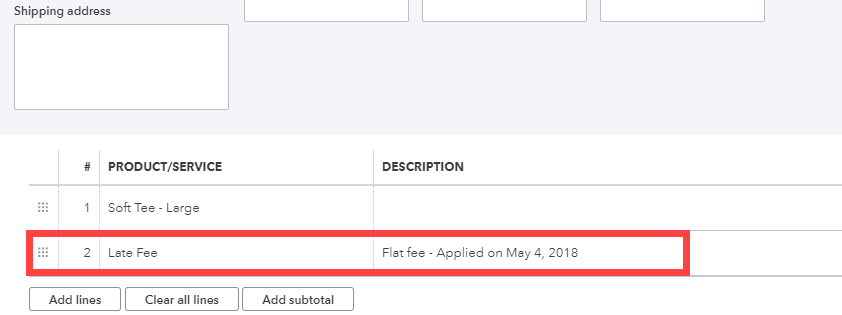Turn on suggestions
Auto-suggest helps you quickly narrow down your search results by suggesting possible matches as you type.
Showing results for
Get 50% OFF QuickBooks for 3 months*
Buy nowWe are a small condo association with 87 units and do our own property management. We have a great Excel spreadsheet for Payables, but owner data and Receivables are all done by hand. We want to install a simple to use database system to keep track of all owner information, including their monthly payments.
If you use QB for this purpose, I would love to talk to you.
Thank you.
Solved! Go to Solution.
The way I would do this in QB, I would use desktop it is more fully functional and I can see no reason you would have to be able to log in from somewhere else. (it is also cheaper, a non partisan comparison of QBO vs QB desktop
http://onsale-apparel.com/Rustler/qbo-or-qbdt
(cost comparisons are at the end of the article))
Create a customer for the address, then a sub customer for the unit, then a sub customer for the tenant
124 some street
>> unit 1
>> >> Mary Smit
<< unit 2
That allows you to change tenants when necessary, set the old one to inactive (and the records remain) and create a new one
Set up a class for each unit, that allows you to track expenses (and income) per unit and you can report on them.
@jaykay wrote:
We are a small condo association with 87 units and do our own property management. We have a great Excel spreadsheet for Payables, but owner data and Receivables are all done by hand. We want to install a simple to use database system to keep track of all owner information, including their monthly payments.
If you use QB for this purpose, I would love to talk to you.
Thank you.
QBO is cheaper if you need multiple users with remote access. It has many features that Desktop does not have, and visa versa.
One is the ability to set up recurring automatic monthly payments where the bookkeeping is automatically done. It is free for 7 day settlement and 1% for 1 day.
I would set up each unit as a "customer", and the tenant as a sub-customer.
I don't see the need for the Class feature - which is only available in the highest level version - as you can allocate expenses to customers, and run a P&L by customer, if needed.
The way I would do this in QB, I would use desktop it is more fully functional and I can see no reason you would have to be able to log in from somewhere else. (it is also cheaper, a non partisan comparison of QBO vs QB desktop
http://onsale-apparel.com/Rustler/qbo-or-qbdt
(cost comparisons are at the end of the article))
Create a customer for the address, then a sub customer for the unit, then a sub customer for the tenant
124 some street
>> unit 1
>> >> Mary Smit
<< unit 2
That allows you to change tenants when necessary, set the old one to inactive (and the records remain) and create a new one
Set up a class for each unit, that allows you to track expenses (and income) per unit and you can report on them.
@jaykay wrote:
We are a small condo association with 87 units and do our own property management. We have a great Excel spreadsheet for Payables, but owner data and Receivables are all done by hand. We want to install a simple to use database system to keep track of all owner information, including their monthly payments.
If you use QB for this purpose, I would love to talk to you.
Thank you.
QBO is cheaper if you need multiple users with remote access. It has many features that Desktop does not have, and visa versa.
One is the ability to set up recurring automatic monthly payments where the bookkeeping is automatically done. It is free for 7 day settlement and 1% for 1 day.
I would set up each unit as a "customer", and the tenant as a sub-customer.
I don't see the need for the Class feature - which is only available in the highest level version - as you can allocate expenses to customers, and run a P&L by customer, if needed.
We just bought QB online and would like to set up Units maintenance fee receivables and associated late fees. It is a recurring monthly payment that we receive from unit owners
Welcome to the Community, DRC58-60. I'd be glad to show you how to set up units maintenance fee receivables and late fees in QuickBooks Online. Let's start with the units maintenance fee receivables.
When creating new accounts, we recommended double-checking with an accountant to ensure that the books are set up correctly. If you do not have an accountant, we provide a Pro-Advisor program. They offer a free consultation. Simply enter your zip code, and you can connect with an expert in your area.
Now, let's set up the late fees.

To learn more about setting up different late fee rules for certain customers, what income account late fees are tied too and other frequently asked questions, this article is very handy.
Also, I have included information about creating recurring transactions for your edification.
You're always welcome if you ever need assistance again in the future.I'm always around to lend a hand. Thanks for dropping in, take care and enjoy your day.



You have clicked a link to a site outside of the QuickBooks or ProFile Communities. By clicking "Continue", you will leave the community and be taken to that site instead.
For more information visit our Security Center or to report suspicious websites you can contact us here